In what way has Benoit Paillé and Will Lakeman explored colour in their work?
Introduction
Colour photography is an area I have always wanted to explore, the use of colour (or the lack of it) can really define an image and be a great tool in creating beautiful, eye catching and exciting photographs. I feel like the world is becoming less colourful and more dull with most modern buildings being painted with colours such as dark greys and whites. Nowadays, cars too, are either coloured in white, back, grey and silver also logos are losing their colour and signage is becoming more dull while street lights are losing their warm orange glow. It does not help that the sky is usually overcast and grey which can lower your mood. I am not the only one who notices this with a study finding that 3 out of 4 manufactured cars are painted in monochrome and the most popular carpet colour is grey. Researchers from the science museum group also analysed thousands of photographs and found that in the 1800s monochrome colours only represented around 15% of all the items in the photographs, but nowadays that number has increased to around 60% of items being either black, white or grey. (Pękala 2024) To combat this, I want to show the importance of colour by creating colourful and vibrant photographs. A fun area of this is painting with light as it has the potential to be creative and illustrative. The artists I want to analyse, both use light painting in their work as well as other photographic techniques such as long exposure and bracketing. Will Lakeman and Benoit Paillé, both create interesting and beautiful images through the use of colour photography and light painting. I want to respond to their style of by capturing and trying to recreate the dream like effect their images have as well as the way they use colour to help compliment their work.
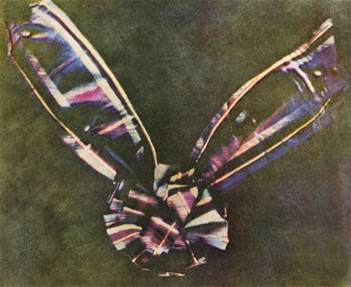
Early colour photography
Colour photography was something researchers spent ages trying to create when photographs could only be taken in black and white. Some photographers got so tired of waiting for the invention of colour photography they took matters into their own hands and started adding colour by hand to their photographs by colouring them in. It was not until 1861 when James Clerk Maxwell and Thomas Sutton managed to create the first colour photograph using the three-colour method he proposed. The three-colour method involved taking the photo three times, one time with a red filter, one with a blue filter and one with a green filter. Maxwell printed these images onto glass and used three projectors with the same colour filters used when photographing the image. When the projectors were turned on it displayed the full colour image in all its glory. After this success Thomas Sutton and his business partner L.D. Blanquart-Evrard moved to Jersey in 1847 to set up a photography studio in St Brelade’s bay which sadly burnt down a few years later.
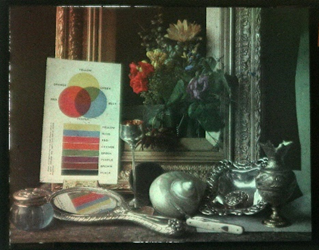
The first commercially successful process of taking colour photographs was called the autochrome and was invented by the French brothers Auguste and Louis Lumière in 1904 however it was not commercially available until 1907. The process involved putting an autochrome plate into the camera and using a yellow filter for a more accurate colour as the blue was very sensitive and this helped counteract it. The autochrome plates were a complex process to make and involved millions of microscopic grains of potato starch, around four million per square inch, which were dyed red, green, blue or violet and mixed together and spread out over the plate which a varnish is used to make them stick. After this charcoal powder was used to fill in any gaps between the coloured starch and the plate was flattened; to make sure the grains were flat and then covered in an emulsion. When you take a photograph with these plates the light passes through the grains of potato starch and combines with the light from the camera which creates the colour. This process was very successful and took the world by storm with the demand outweighing the supply as the factory which made them could only make about six thousand of these plates a day.
Will Lakeman
Will Lakeman is a local Jersey artist. In 2023 he did an exhibition at Art house Jersey’s Capital house gallery, where over two thousand people attended. The exhibition was based on the former leisure centre and swimming pool at Fort Regent. Lakeman states about his work that, ‘through my work I try and communicate something of the weird, vivid sensations of my dreams and nightmares.’ (Lakeman) This can explain why a lot of his photographs have a dream like and in some cases liminal aesthetic to them, especially in his series ‘Lurking in darkness’ which uses coloured gels and is shot at night. As well as Will Lakeman’s work being shown at Arthouse Jersey, he has also had his work shown at the Private & Public gallery and the CCA galleries. In 2021 he was awarded the Summer Prize from the CCA Galleries International Summer Exhibition, and this shows just how creative and talented his photographs are, which I personally find that they are all interesting to look at especially as most the images are taken locally.
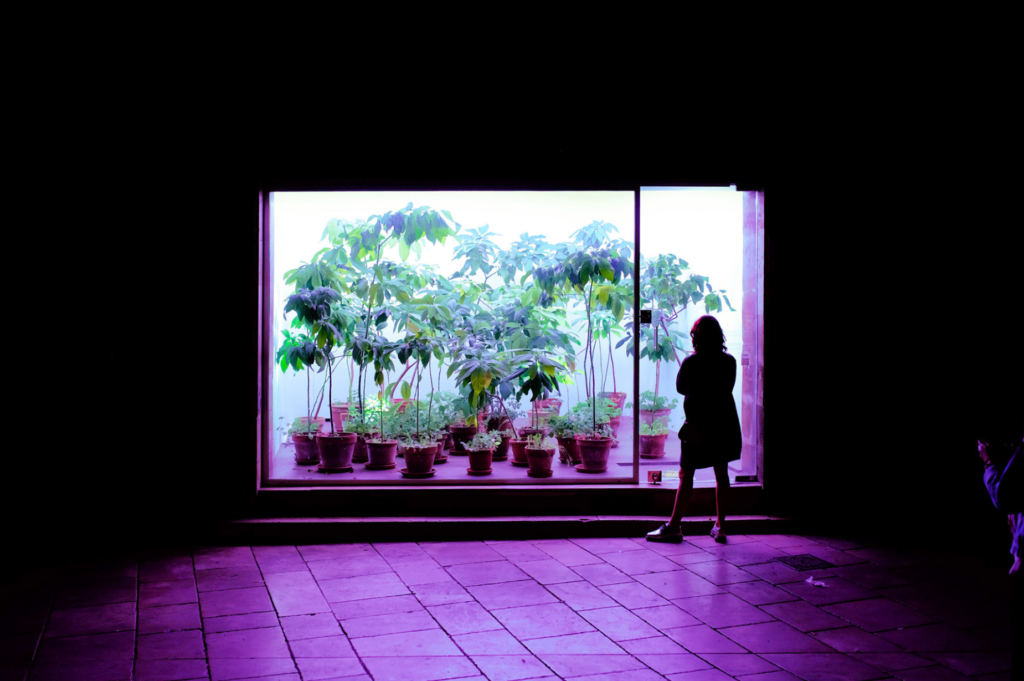
This photograph was taken by Will Lakeman in 2020 as part of his series of images called ‘Lurking in darkness’ with Will describing the series as ‘I love to explore the world at night. I aim for these images not to represent reality, but to explore my dreams and fantasies.’ (Lakeman) which can be seen in this image, which has a dreamlike and even liminal aesthetic to it due to multiple factors.
The first factor is due to the sense of unknown. We know nothing about the person looking in the window or even the location, as the background is completely black and there is little to nothing in the image that provides context. The second factor is the strangeness of the photograph. In the photograph, we see a woman looking through a window, which is in the centre of the image and is the main subject of the image. On the other side of the window, there are lots of potted plants. This sense of strangeness reflects his dreams and fantasies, as dreams can be strange and random and contain elements of the unknown, providing mystery and making people want to seek answers.
The lighting is also quite interesting in the image, all the lighting is artificial, and the white light looks incredibly bright especially as it contrasts with the darkness of the rest of the image, there is also a really nice purple shadow coming from the window, made from coloured gels, which provides light to the foreground of the image. The lighting also helps contribute to the dream like feel of the photograph. The cool white and purple from the lighting gives the image a cold feel to it and may imply that the dream is not inviting or positive and may reference that the photographer’s dreams are not enjoyable or wholesome ones.
Benoit Paillé
Benoit Paillé is an unconventional artist who abandoned his daily life in 2013 to live in his truck and drive around the world taking beautiful photographs in places such as China, Guatemala, India and Mexico. Benoit describes his photographs as, ‘my pictures document an altered state of mind.’ (Paillé) He originally undertook a biomedical career but ended up becoming a self-taught photographer instead.
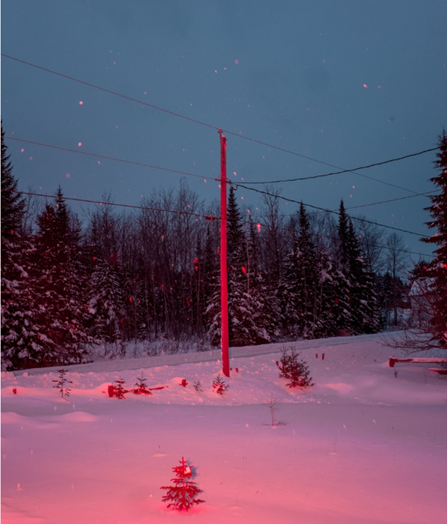
This Image is taken by Benoit Paillé is part of a series called ‘Magical realism nihilism POLE’ and in this collection of images Benoit took of poles, a mundane everyday object which people don’t pay much attention to and photographs it in an interesting and glamourous way. Benoit describes it as deconstructing, ‘the aesthetic hierarchy between what is deemed worthy of interest and what is not.’ (Paillé) It is incredibly interesting seeing how he captures these objects which people don’t see worthy of being a photographed and makes them into aesthetically pleasing photographs.
In the photograph, the pole is centred right in the middle of the image which leads the viewer to look and acknowledge it, something they may not notice or pay any attention to if they were walking past it. There is also a contrast as the geometric vertical line of the pole contrasts with the horizontal lines of the wires attached to the pole. The snow in the foreground of the images creates a soft texture which pairs well with the hard wooden pole. The lighting in the photo is also incredibly beautiful with an artificial red light, not seen in the image, creating a lovely glow in the image and making the pole look red, this helps Benoit achieve his goal in making the pole look visually pleasing.
The pole being in the snow which has no footprints and the trees in the background which could be of a forest gives the image a sense of isolation which is further added by the cold feel the photograph has due to the white balance and the blue darkness of the sky. The cold snow may also resemble the isolation of the pole as it just sits there getting no appreciation or thought even though it serves a purpose and may be used as a telegraph pole or to hold up the wires which provide power to a home. The red glow in the image creates a conflict to this as red is seen to be a warm colour and may highlight the photographer’s intentions of shedding light it and breaking the boundaries of what is seen as worthy to be photographed.
Conclusion
In conclusion Will Lakeman and Benoit Paillé both explore colour in similar and different ways with will Lakeman using it to create a dream-like feel to his photographs and Benoit Paillé using colour to compliment his work and add to the overall aesthetic. Both photographers use colour to create beautiful and vibrant photographs, and it really highlights the importance of colour in a world where dull colours are becoming a lot more common. I really want to show the importance of colour in my images by using vibrant colours like they do and taking my photographs at night like they do with their photographs that inspire me.
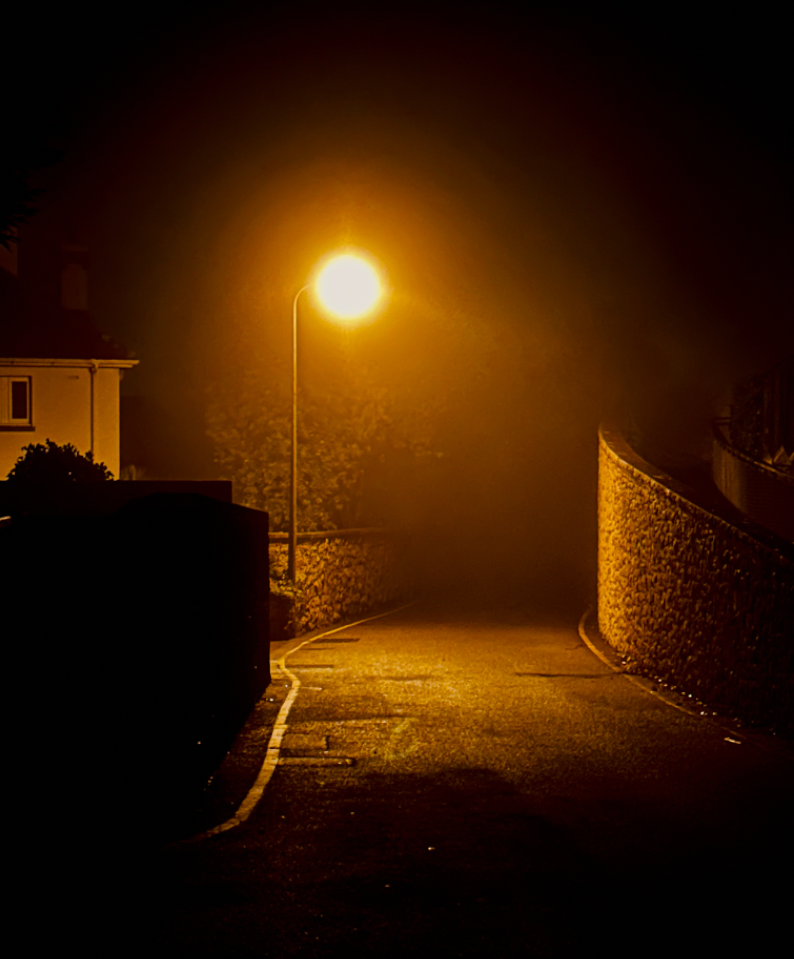
This photo I took was taken at night when there was a bit of fog/mist. As a result, it diffuses the light around the streetlight, giving it this warm orange glow. The ground is also a bit wet, which makes the light on the ground more shiny and reflective. This all contrasts well with the shadows and darkness at the top and bottom of the image, giving a nice balance of light and darkness. The photo also has no one in it and not much context as you can’t see the rest of the road due to the mist and darkness. This gives the photo a mysterious dream-like effect which is something Will Lakeman explores in his series ‘Lurking in darkness’ and gives off the same energy as the photo Will Lakeman took in that series of a road and the entrance to the petrol station in the fog with the vibrant orange glow of the streetlights. The photo also uses techniques from Benoit Paillé as I enhanced the orange in the image to really capture the colour and add to the overall aesthetic of the photograph. This also helps highlight the importance of colour as the warm orange glow would not be possible if the road used dull LED streetlights.
- Bibliography
- Pękala, A. (2024). Is the World Turning Gray? Why Colorful Objects Are on the Decline. [Blog] available at: https://medium.com/@aleksandrapekala/is-the-world-turning-gray-why-colorful-objects-are-on-the-decline-e799e15ccdc5 [Accessed 15 Jan. 2025]
- Roberts, P. (2007). The Genius of Colour Photography: From the autochrome to the digital age. London: Carlton Publishing Group.
- Photo museum Ireland. (no date) The first colour photograph, as opposed to a painted black and white photo, was created by James Clerk Maxwell and Thomas Sutton [Blog] Available at: https://timeline.photomuseumireland.ie/timeline/the-first-colour-photograph-as-opposed-to-a-painted-black-and-white-photo-was-created-by-james-clerk-maxwell-and-thomas-sutton [Accesed 20 Jan. 2025]
- National Science and Media Museum. (2009). History of the autochrome: The dawn of colour photography. [Blog] available at: https://blog.scienceandmediamuseum.org.uk/autochromes-the-dawn-of-colour-photography/ [Accessed 20 Jan. 2025].
- Lakeman,W. (no date) About me. Available at: https://lakemanphoto.com/about-me [Accessed 22 Jan. 2025]
- Paillé,B. (no date) About. Available at: https://gbuffer.myportfolio.com/about [Accessed 23 Jan 2025]
- J. Clerk Maxwell, T.Sutton (1861)
- E. Kelsey, ‘The Positive and its Natural Colors‘ (1909)
- W. Lakeman, ‘Lurking in darkness‘ (2020)
- B. Paillé, ‘Magical realism nihilism POLE‘ (2019)

